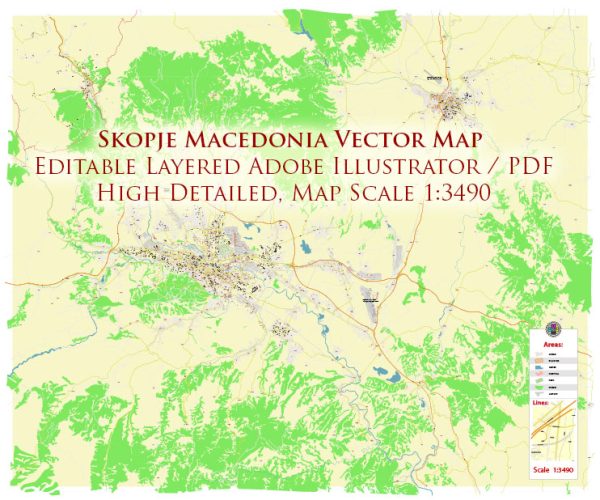Skopje, the capital and largest city of North Macedonia, has a rich history of urban development that spans several centuries. The city’s strategic location along the Vardar River and its proximity to important trade routes have contributed to its historical significance. Here is a brief overview of the history of urban development in Skopje:
- Ancient Period:
- Skopje has ancient origins, with evidence of human settlements dating back to the Neolithic period.
- The city was part of the Roman Empire and known as Scupi. During this time, it served as an important military and administrative center.
- Byzantine Era:
- After the fall of the Western Roman Empire, Skopje came under Byzantine rule. The city continued to be a significant regional center.
- In 518 AD, the city was devastated by a powerful earthquake but was later rebuilt.
- Medieval Period:
- Skopje experienced a series of changes in rulership, including periods of Bulgarian and Serbian control.
- The Ottomans captured Skopje in 1392, marking the beginning of an extended period of Ottoman rule.
- Ottoman Rule:
- The Ottoman period significantly influenced Skopje’s architecture and urban layout. Many mosques, bridges, and public baths were constructed.
- The city became a major economic and cultural center within the Ottoman Empire.
- In 1689, a massive fire destroyed much of Skopje, leading to extensive reconstruction efforts.
- Modern Era:
- After the First Balkan War (1912), Skopje became part of the Kingdom of Serbia. Subsequently, it was integrated into the Kingdom of Yugoslavia.
- During World War II, the city was occupied by Axis forces and experienced significant damage.
- In 1944, Skopje became the capital of the People’s Republic of Macedonia, a constituent republic within socialist Yugoslavia.
- 1963 Earthquake:
- Skopje faced a devastating earthquake in 1963 that caused extensive destruction. A large part of the city had to be rebuilt.
- The post-earthquake reconstruction effort led to the development of modernist architecture, including the construction of the Skopje City Center.
- Independence and Contemporary Development:
- With the breakup of Yugoslavia in the early 1990s, Skopje became the capital of the independent Republic of Macedonia, later renamed North Macedonia.
- In recent years, Skopje has undergone significant urban development and revitalization efforts, including the construction of new landmarks, bridges, and cultural institutions.
- The city has also faced debates and controversies regarding the “Skopje 2014” project, an initiative to enhance the city’s aesthetics through the construction of neoclassical-style buildings and monuments.
Throughout its history, Skopje has been shaped by a blend of cultural influences, from Roman and Byzantine to Ottoman and modernist. The city continues to evolve, reflecting its rich heritage and the aspirations of its residents.


 Author: Kirill Shrayber, Ph.D.
Author: Kirill Shrayber, Ph.D.